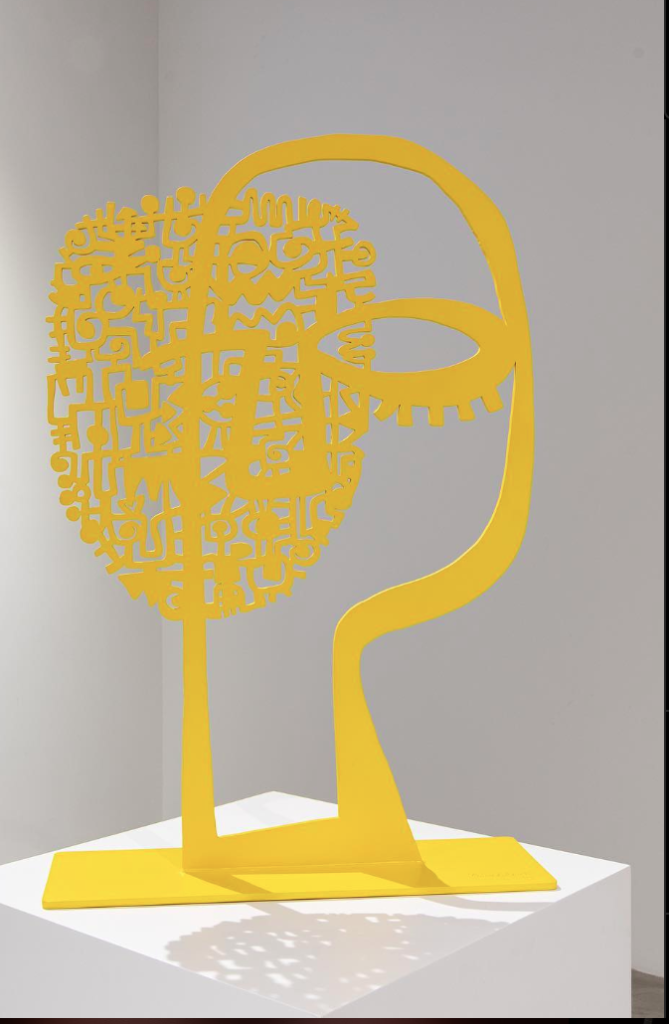In today’s society, we cannot overlook the significance of names. Oral communication deeply embeds our cultural roots, providing the foundation for language, culture, and identity. Imagine a scenario where little to no information about your origin is available, and the only knowledge you possess is that your ancestors traveled from an unknown place – such limited information becomes a valuable anchor. Intertwined elements—information, communication, and languages —have shaped and defined the African identity.
Throughout history, African names have been derived from earthly bodies, days of the week, seasons, and more. This pattern is evident in various “common” cultures, such as the Bantus, Nilotes, and Cushites, across different regions in Africa. Victor Ekpuk‘s exhibition, “Interwoven Textures,” communicates to the African identity globally through the Nsibidi language. This exciting body of work transcends the impacts of globalization and resonates with the core of our identity embedded in our ‘common’ language.

Names, communication, and language have served as custodians of African identity over the years. Today, individuals often realize their identification as Africans by their names. Of course, this is based on the metric of globalization, as identity becomes more important with scarcity. Communication, too, plays a significant role in identifying individuals in the absence of visual cues like skin color. Victor Ekpuk’s art eloquently illustrates the similarities among African cultures worldwide, emphasizing the deep connections that persist despite geographical distances.
Ekpuk’s work, “Meditation of Memory,” in Havana, for instance, highlights the connection between Africa and Cuba through cultural societies, such as Abakua. It serves as a testament to the enduring spirit of the African identity, transmitted through oral traditions and language. Africa, in this sense, becomes more than a geographical location. It becomes a state of mind, providing a channel of connection between two strangers from different backgrounds.
Moreover, Victor Ekpuk’s artistic creations not only celebrate the uniqueness of African identity but also serve as a poignant reminder that, amidst the currents of industrialization and technological progress, our shared black experience continues to bind us. The inclusion of 3-dimensional sculptures in his exhibition takes this celebration a step further, embodying a shared identity among African people.

These sculptures, emerging dynamically from the gallery walls, go beyond mere artistic representation. They symbolize a collective essence that transcends historical and industrial boundaries. Therefore, each sculpture becomes a powerful point of connection for individuals of African descent as they resonate with the art through bold colors, Afro-centric shapes, or facial forms. It is an immediate and profound connection, as these sculptures speak directly to the core of their identity.
Furthermore, Ekpuk’s interest in anthropology and collaborative works reflects his commitment to forming true connections with people. He envisions his art as a starting point for dialogues and discoveries about the differences and commonalities among cultures. Ultimately, his work is a celebration of the African identity. It recognizes the commonalities, unity, and strength found in shared language and personal connections—a true celebration of African diversity.
This glorious exhibition has been extended till the 31st of December, and you can check out the installation views here.


